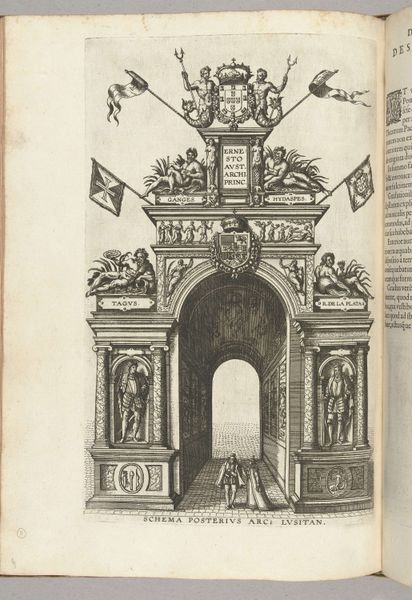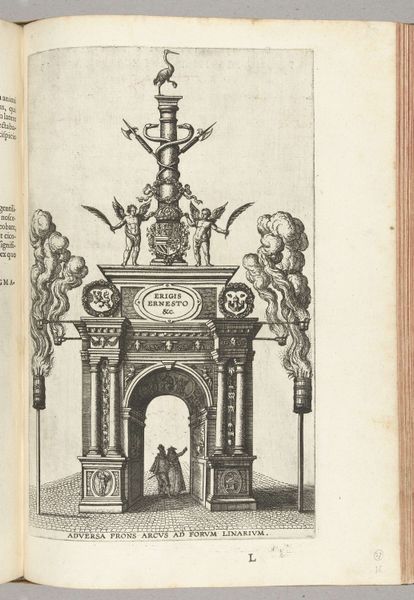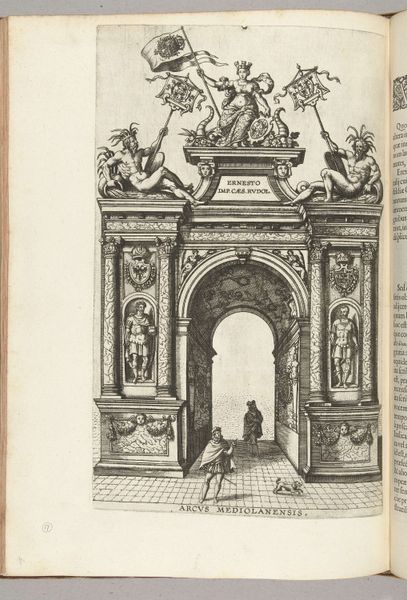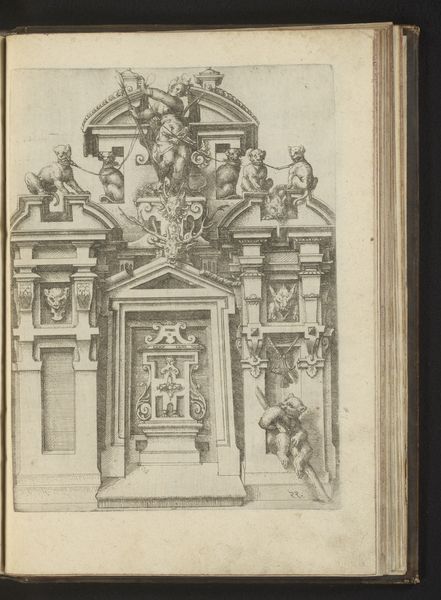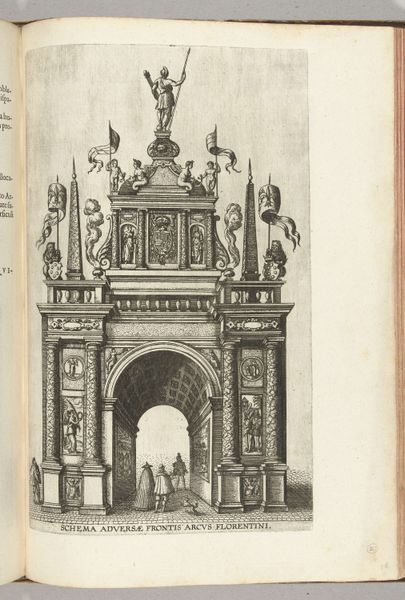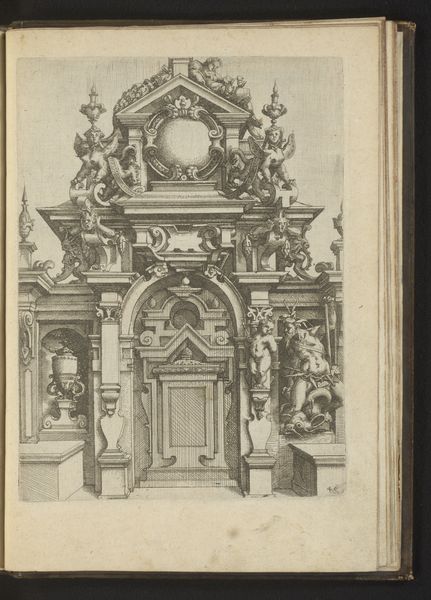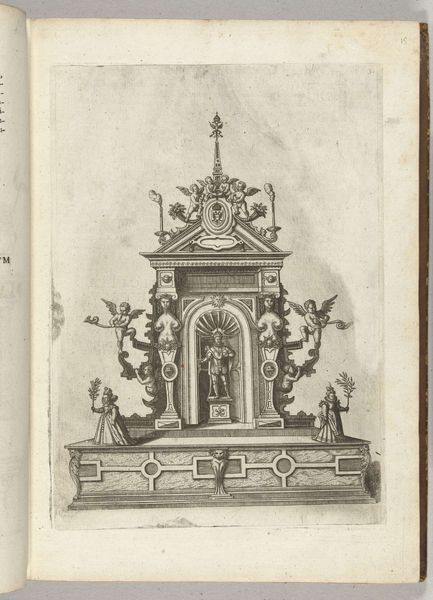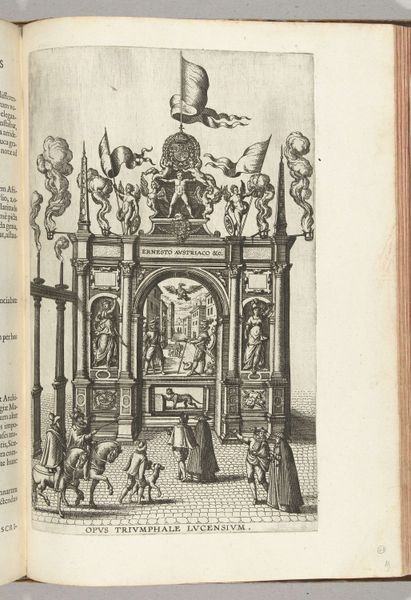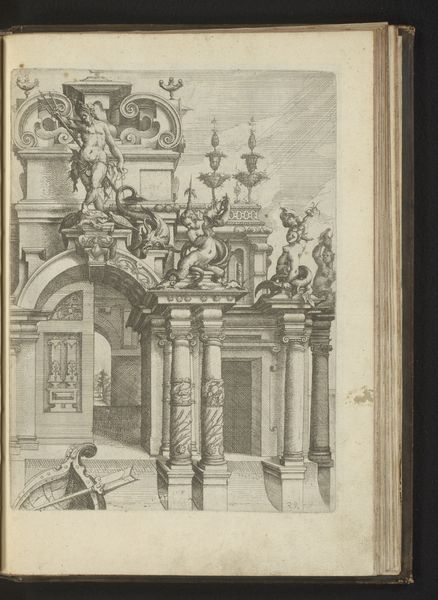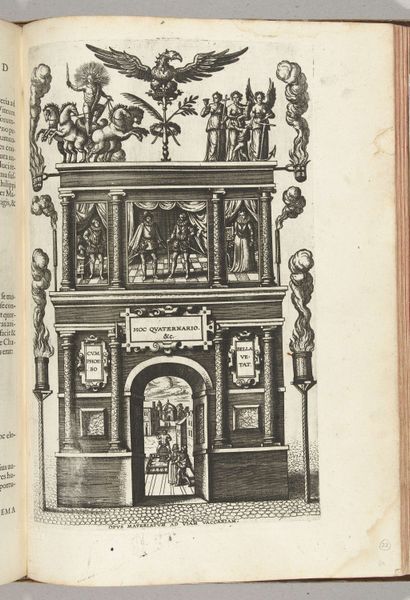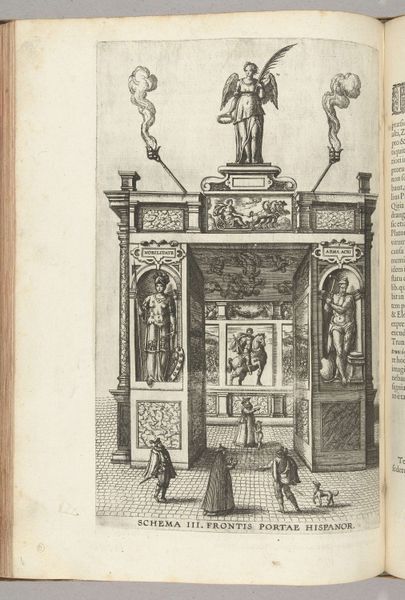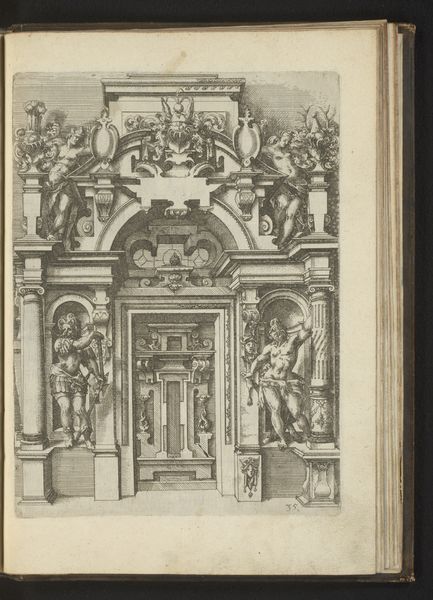
print, engraving, architecture
# print
#
figuration
#
11_renaissance
#
history-painting
#
italian-renaissance
#
engraving
#
architecture
Dimensions: height 328 mm, width 202 mm
Copyright: Rijks Museum: Open Domain
Editor: This is "Portugese triomfboog (voorzijde)" created between 1594 and 1595 by Pieter van der Borcht, currently at the Rijksmuseum. It's an engraving, and the detail is incredible. I am curious to hear more – what is your interpretation of this piece? Curator: Well, it is important to remember this triumphal arch isn’t just decorative. Consider the inscription dedicating it to Philip II. This print offers us an important insight into the representation of power at the end of the 16th century. The figures atop animals representing various continents like Ethiopia, India, and Brazil show how power and wealth were construed through an evolving colonial project. The act of 'triumph' then becomes less about solely Portugese national identity, and more an articulation of domination. Does the representation of "otherness" strike you as particularly pointed here? Editor: It definitely does, particularly because the figures are somewhat subjugated by riding animals as well as supporting flags bearing the Portugese coat of arms. There is an unbalanced power dynamic that puts Portugal above everyone. Do you see any elements of resistance within this depiction? Curator: That's a very important question, and one that we need to approach with caution. Visual depictions are never neutral; as such, considering this print within its broader context—the dynamics of trade, colonization, slavery—opens up a powerful way to interrogate art history through an activist lens. There is resistance and refusal encoded even within what’s seen as acceptance. Consider who has been left out. The absence of the people and subjugated lands signifies its erasure from the popular narrative. Editor: That's fascinating. So looking at it not just as a celebration, but an exercise in controlling the narrative? Curator: Precisely! Art of this era isn't just to be passively admired but to be actively questioned, especially how it perpetuates unequal systems of power. Editor: This really broadened my understanding; thank you for sharing. Curator: My pleasure! Thinking about context critically makes the history come alive.
Comments
No comments
Be the first to comment and join the conversation on the ultimate creative platform.
